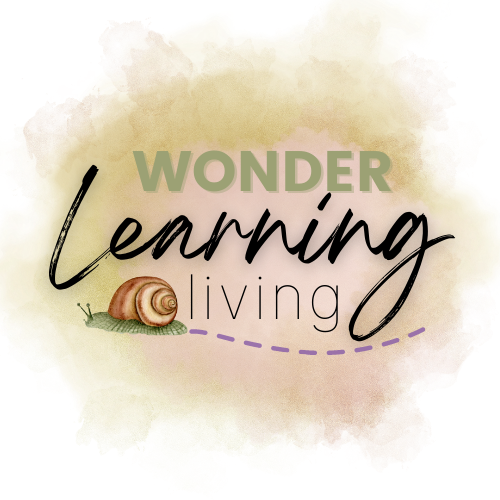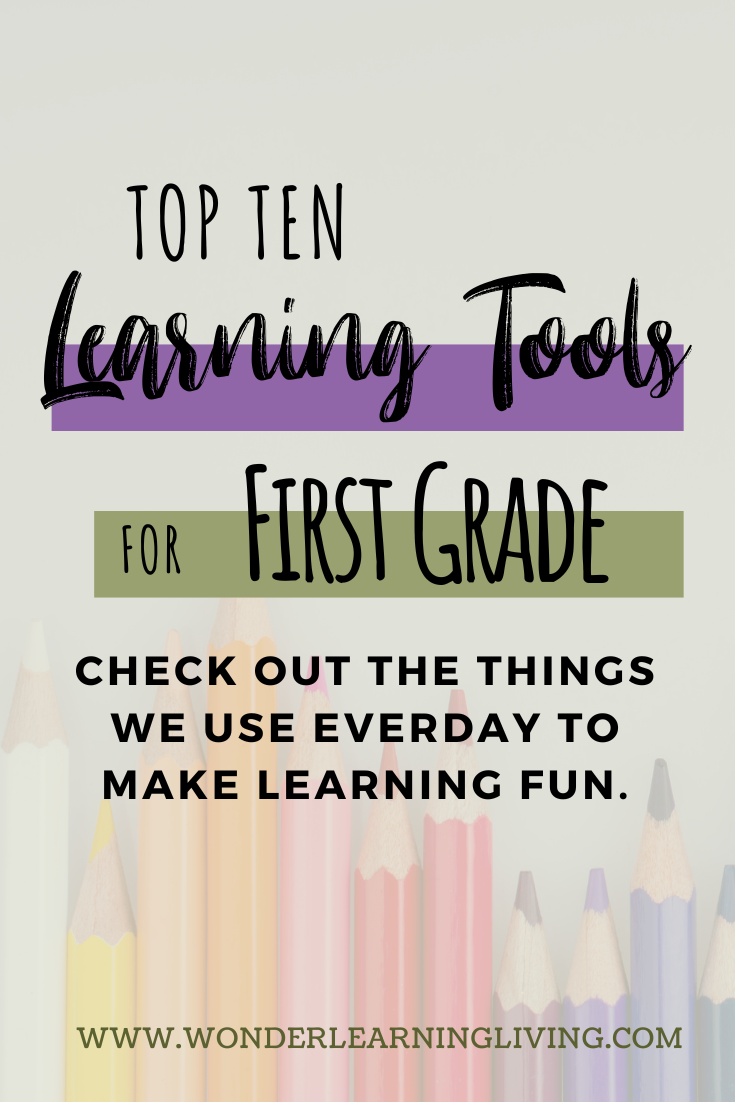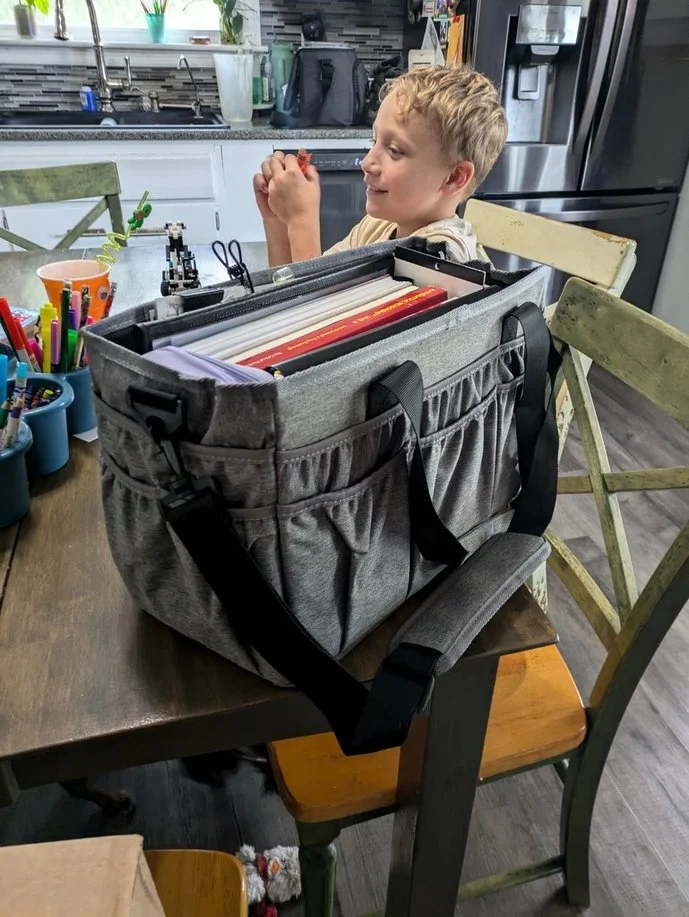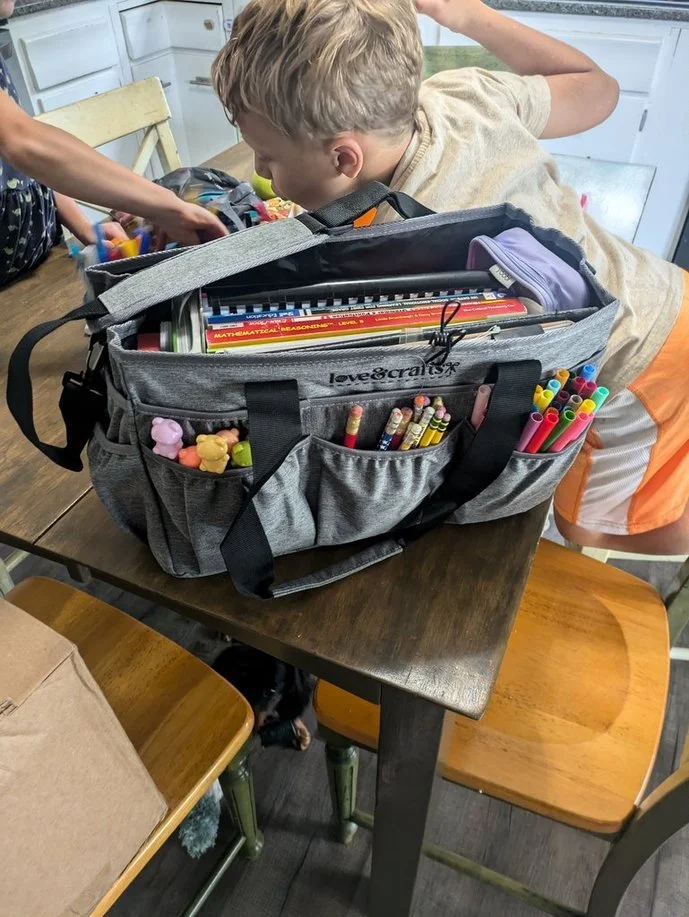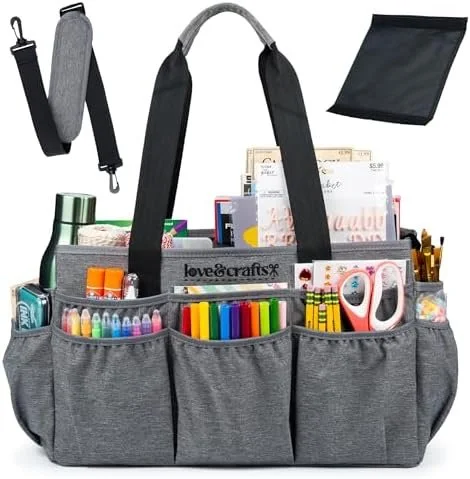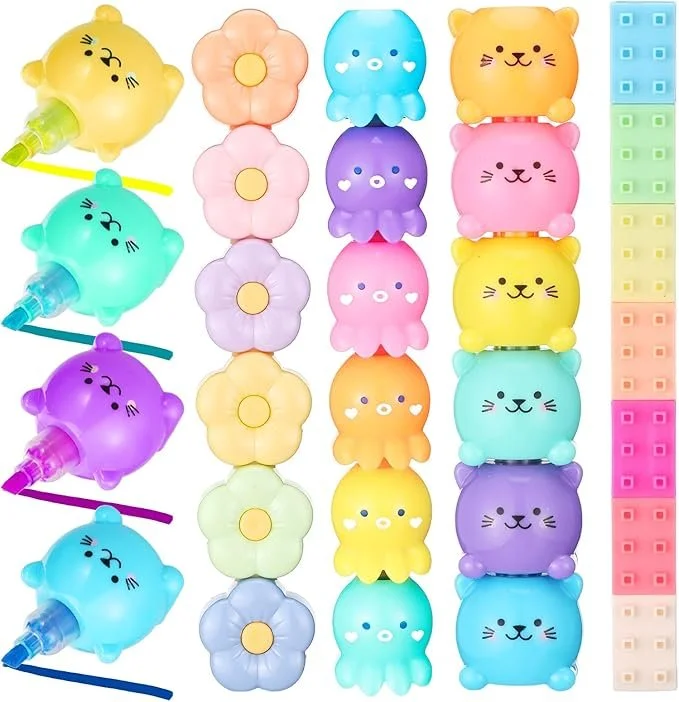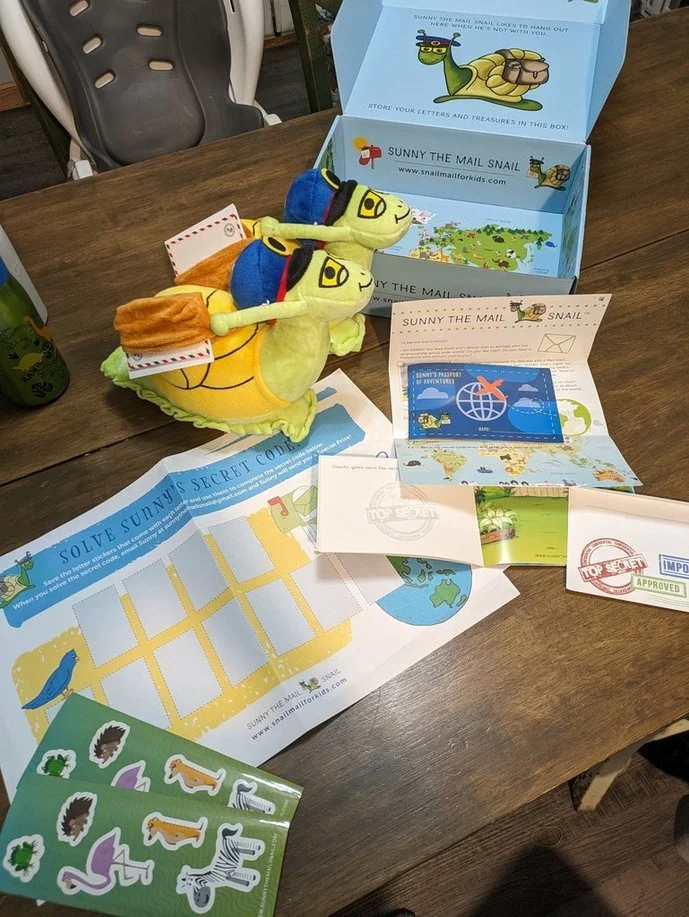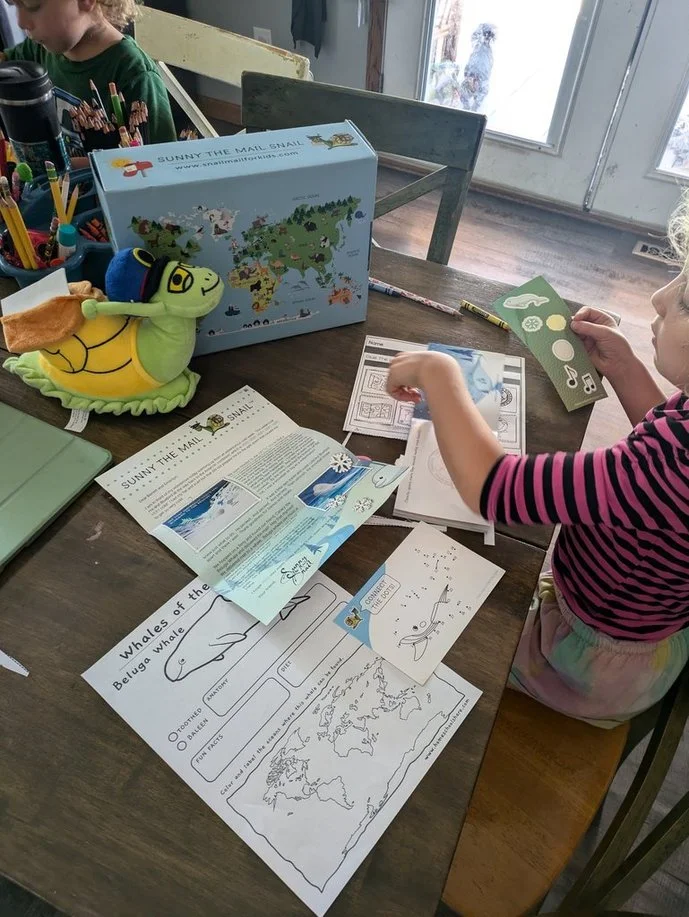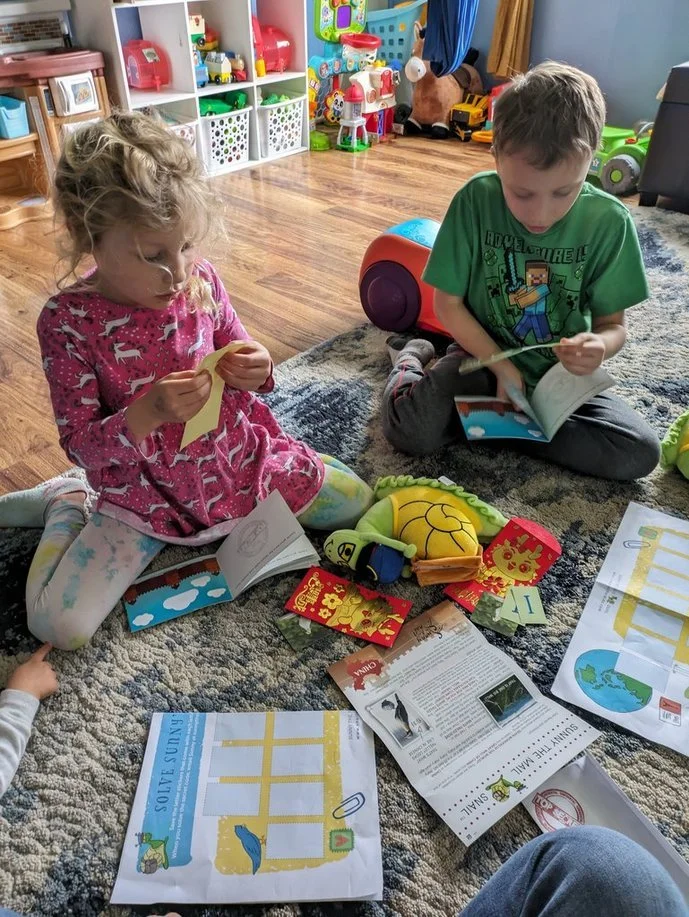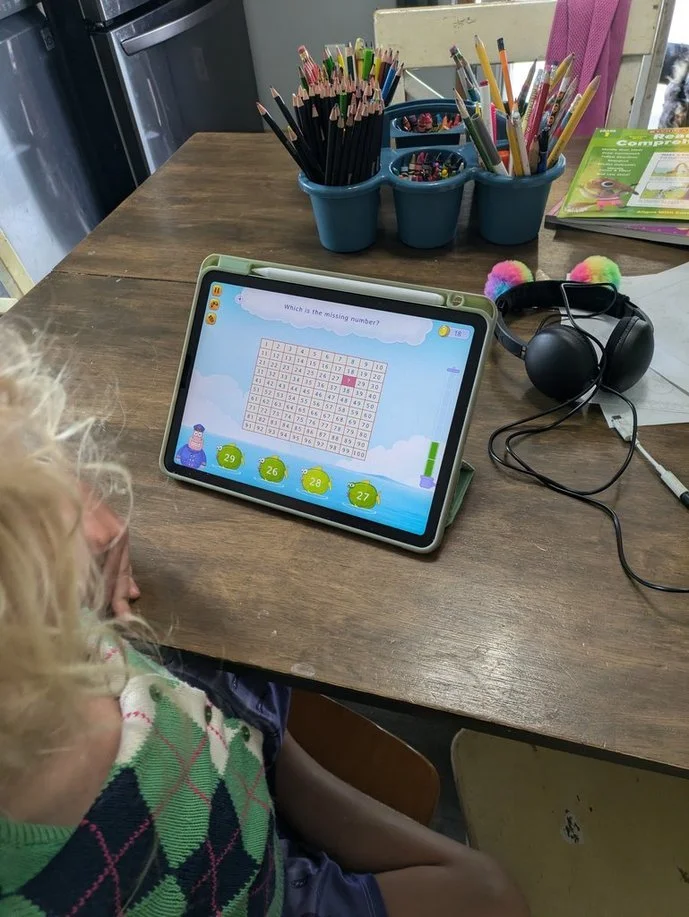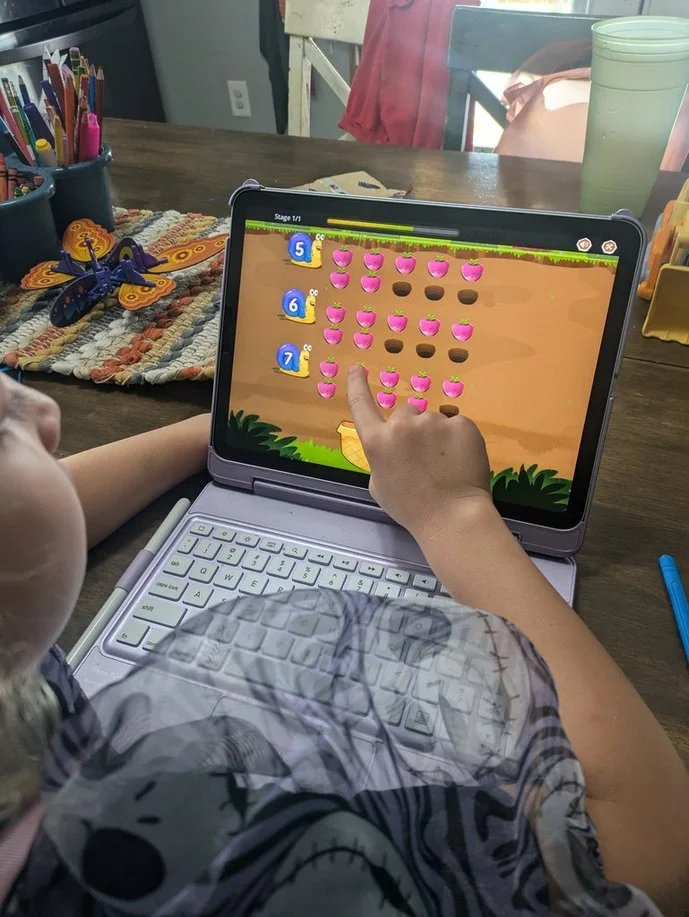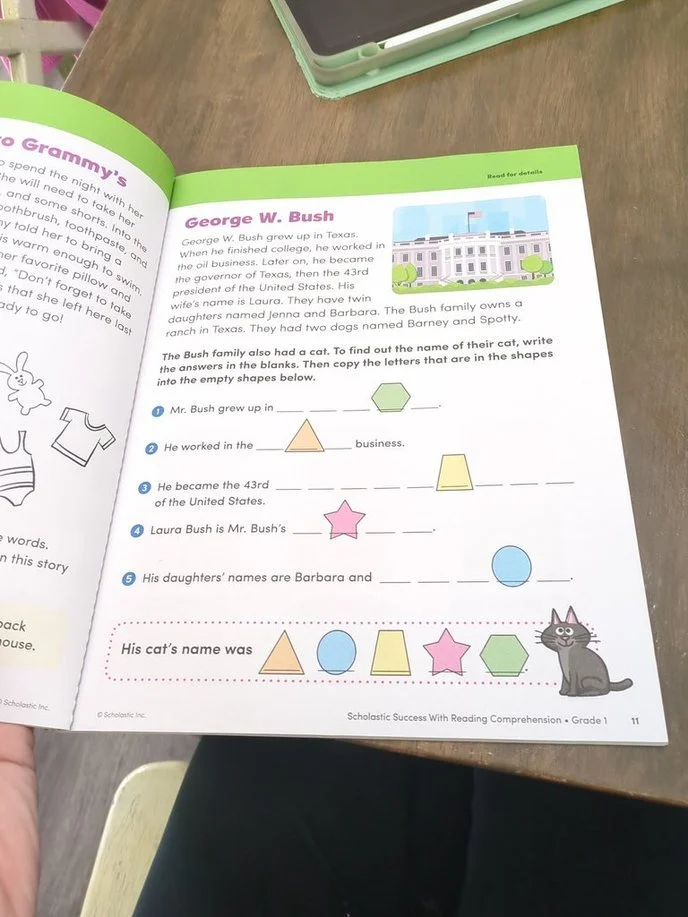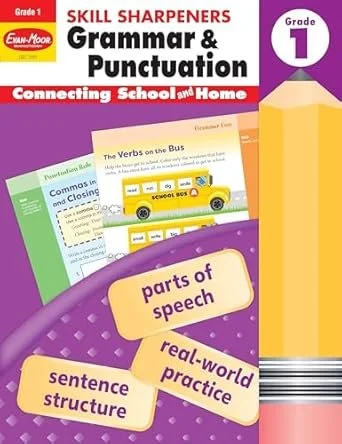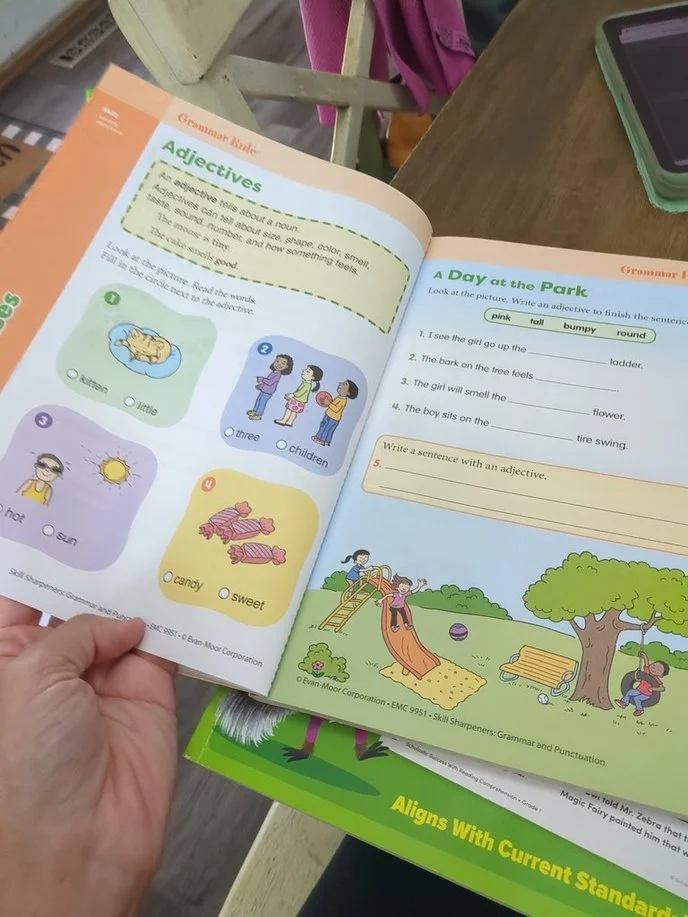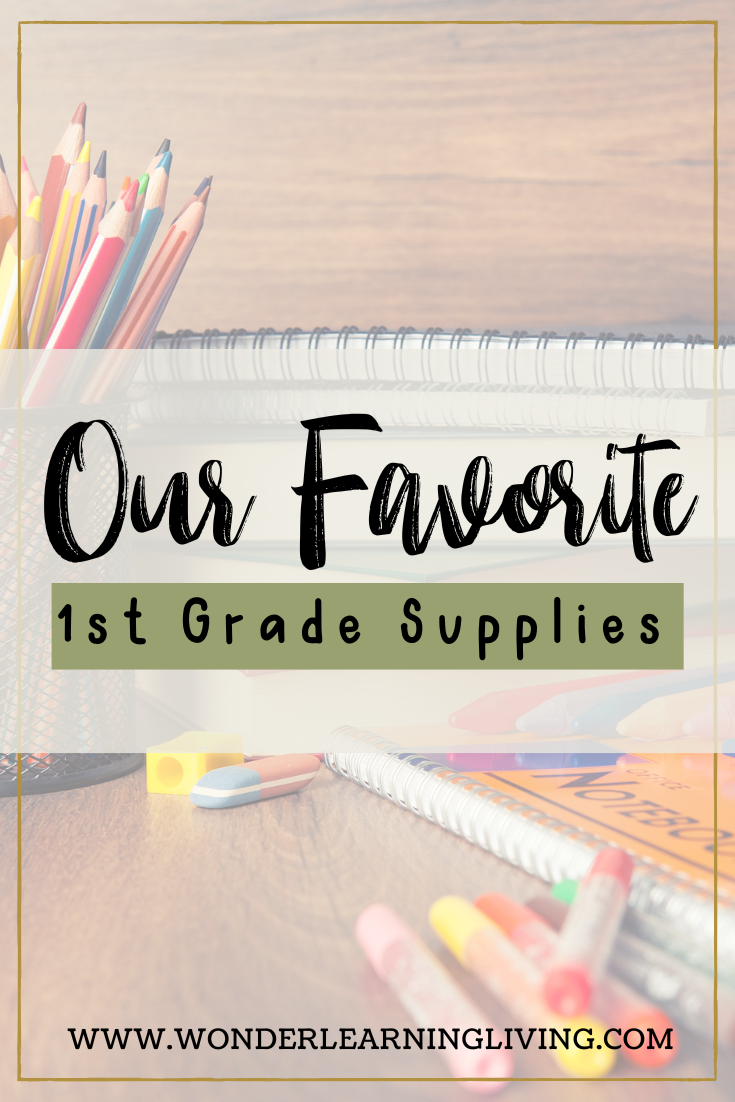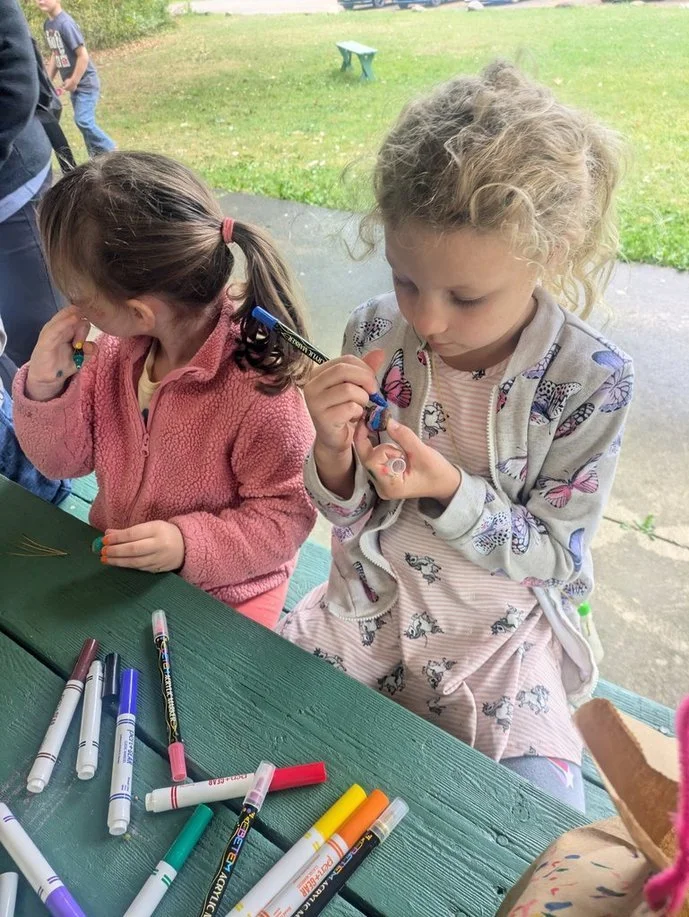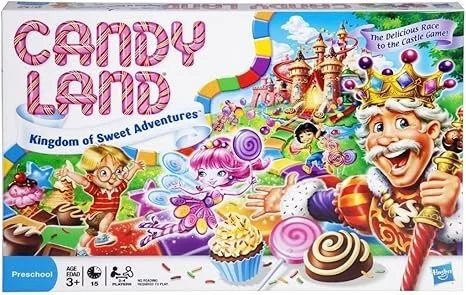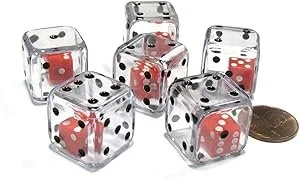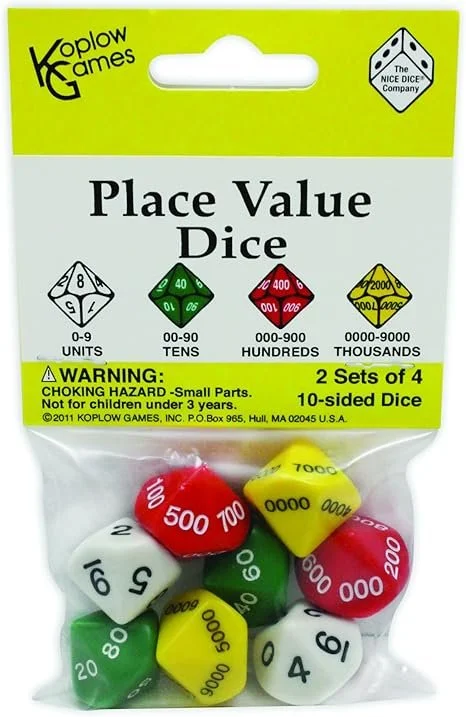Homeschooling First Grade- Fun and Functional Learning Tools We Love
It’s taken us a little while to find a good rhythm and structure for first grade this year. My daughter quickly grasps concepts but requires additional curriculum beyond the typical first-grade level to retain information effectively. Now 3 months into the school year we are seeing some real benefits. She also loves to be as hands on as possible for school work, so finding unique ways to make learning fun for her without having to buy new things has been quite the challenge. I really want to keep our homeschool simple and effective. So all of the first grade learning tools you see mentioned are things that we use almost daily and have either made our lives easier or our learning more fun and interactive.
Top Ten Items we are LOVING right now
#1. The ever clever craft bag
I kept seeing posts on how awesome the craft bags were to hold and transport all of the various homeschool supplies but none of them had exactly what I wanted until I found the perfect one! We use this every day! Our curriculum is stored in it along with all the supplies we need. I can quickly put it away or throw in the car for impromptu park learning days.
The reasons I chose this one over the viral one you see posted a lot are:
It is larger it fits all of our books, reading books, craft supplies, manipulatives and I still have extra space.
It has an awesome shoulder strap for carrying to and from places which when you have multiple kids is quite important.
SO MANY POCKETS!! I have everything we use in there and haven’t even used half the pockets. So, I will throw snacks, wipes, and diapers in those when we leave the house for an outing. I also love that there is one deep pocket behind each shallower pocket so I can stick scissors and glue and other things I don’t want my toddler to see in those and they are elastic so it holds all of the supplies really tightly without it all falling everywhere. It also has an zipped inside pocket for keys, personal items, etc. Can you ever have to many pockets??
#2 The 100 chart pop it
Forget boring 100 charts on the wall, WE LOVE THIS THING. It is my TOP must have first grade learning tool because it is so interactive and satisfying. It has so many uses not only for identifying numbers but also adding past 20, understanding the concepts of 1 more and 1 less and 10 more and 10 less, and we use it daily for skip counting practice. There is just something so much more fun about being able to pop the number than point to it. We also use dice to practice adding two numbers or adding all the way to 100 and flash cards to identify certain numbers. I also love that each column has a color which has really helped when it comes to understanding how to add or subtract 10 to a number.
#3 Cute pens and highlighters
Okay this is not a necessity but let me tell you my daughter is soooo much more excited to do her work if she also has a pencil buddy or her bear highlighters. These creative art supplies are just simple things I found at the dollar store and Five Below but she loves them and they will 9/10 times change her mood about doing school work if we are having a hard day. She loves fun pencil erasers and pencil buddies to keep her company during independent work and she uses her scented bear highlighters anytime her curriculum says to “circle something” we just highlight it instead. They also make AMAZING stocking stuffers!
#4 Mail Snail
I got the Mail Snail subscription for my kids last Christmas as a fun gift since we all love snails so much. This weekly surprise has evolved into a cherished family time and a regular geography lesson.
Each Mail Snail letter includes a small snail who delivers mail around the world to various animals. Each letter talks about a place and an animal, they also include cute stickers for their passport and a surprise gift that is related to the letter. So, I work a week behind and turn it into a whole geography mini study. We just got one that is all about a turtle and his adventure on the Colorado River. So we will locate the Colorado River and do a few extra activities on Turtles for the week. BAM Geography and some science done. My kids just love getting mail from the mail snail.
The magic is all in the letter and the passport activity I just throw in a few extras that allow us to connect that letter to the rest of the world and what we are learning. This is a really affordable subscription that your kids get every week and you can save $10 with my link!
#5 Rainbow Timer
I wanted a visual timer to make those tough assignments easier and for independent work. This visual timer is amazing for displaying how much time is left on a task. I frequently use this for independent activities like handwriting, extra math, and the seasonal workbooks I put together. She sets it for whatever time I tell her to then she works until it goes off while I switch laundry, do dishes or prep dinner. This really makes those nonpreferred tasks easier to do because she can visually see how much time she has left and she knows she just needs to work until the timer goes off. Sometimes on days when we are struggling I will just set the timer for 30 minutes and she will work on what she can in that time frame and then we are done.
#6. Splash Learn
I 100% dislike using technology in homeschooling at an early age, but I have also learned that with a toddler and activities throughout the week we cant get as much school as I want to done. This is where I use SplashLearn. For example on Fridays when we have co-op I am usually really busy that morning prepping for class and dinner for that evening so I let her set her rainbow timer for 30 minutes and she will play Splash Learn until the timer goes off. What I love about Splash learn is that if you sign up as a teacher not only is it free but also you can assign what you want them to learn. So I always assign concepts she is needing more help with. She has to finish 1 English assignment and 1 math assignment before she is aloud to play any of the extra games. Which honestly they are all awesome at reviewing math and language concepts.
I also love that they have build in daily fact practice. So if you do incorporate technology daily you can ditch the flash cards and have them do 10 minutes of fact practice while collecting cool animals in a make believe realm.
BONUS - it has snail games :)
#7. Extra Language and Spelling Curriculum
This may not be applicable to all but we use the good and the beautiful for both language and math and while its working great for us right now my daughter definitely needs more. She goes through lessons so quickly (we could easily do 3 or 4 a day) that I wanted to incorporate more for her with something different. We use these kinda on a loop schedule so we may do one a day or two a day depending on what our Language lesson was.
My daughter has extra separate writing, reading comprehension, and grammar book that we use. And this works well for US. It may not be what your kids need to thrive and that’s OKAY, but I am going to share what we use in case you are looking for something more as well.
Writing - We are using Spectrum Writing level 1. So far this has been really awesome at helping her writing complete sentences and now we are working more on describing nouns. As it progresses the lessons get a little more intense so I will probably break it down way more for her.
Reading Comprehension- This little workbook is packed full of fun reading comprehension activities. I read the short story to her and then have her complete the activity. Sometimes I do have to read it twice but it’s great for helping her attention and listening skills. Some of the passages also teach history, science, and social emotional learning. It’s a win win.
Grammar and Punctuation- This book is great for learning proper grammar and punctuation such as being able to find the verb and noun in a sentence and learning to use adjectives. This book has helped Emmy come a long way in her writing. She loves to make books and create stories on her own and I am now seeing her add in more details which is awesome.
We also use Spelling Connections as an extra spelling curriculum because I think TGATB moves way too slow for her. This is a great workbook because it focuses on the use of words and similarities with other words as well. I do not give Emmy spelling tests on these works but sometimes we will do a fun spelling craft or activity to reinforce them.
#8. Mini Microscopes
We have been using these small microscopes a lot this winter! We love taking them out to look at snowflakes and ice crystals. We have also used them to look at bugs and the pores on pine needles. There are so many different things you can do with these and I have gotten a lot of questions on which ones we like to use so these are our two favorites.
This one is larger and has a stand that comes with it or you can pop it off and take it with you. I like the screen on this one for being able to display things for the kids (because we all know how easily they can get knocked out of focus). This one is pocket size so it is great to take on walks and look at cool things but it does require a little bit of skill to work. Overall my 6 year old can use both just fine.
#9. Easy to use art supplies
I really really dislike having to clean up a bunch of art supplies and I have found that makes me less likely to do fun art projects. However, I have found some easy to use and clean up creative art supplies that make my life so much easier.
Tempera Paint sticks - I love these. They look like a giant glue stick but are in fact paint sticks that are easy to clean up and store. No paintbrushes or water needed. I store this set of 30 in a regular crayon box so they are easy to grab and throw in my awesome craft bag if needed.
Acrylic Paint Markers - Just like the tempera paint sticks these are an awesome traditional paint replacement. These, I think, are better suited for non paper projects like painting on rocks, pumpkins, acorns etc. I use these a lot in my Nature School for making leaf pets and other fun things. I also highly recommend the double sided ones because the littles like to use the blunt tip ends but sometimes for details the fine tip is super handy and these things dry in seconds so you don’t have to wait around for your projects to dry. We used them to decorate our pumpkins this year and it was a huge hit.
#10. Multi - Purpose Games
We love to play games and I love board games that are easy to convert into educational games so we can play a different way and practice concepts we have been working on without having to buy a bunch of different games.
One example is candy land. It’s a great game by itself but I like to add sight words, addition, or subtraction problems to the cards as well. So in order to move you have to answer correctly. You can even add in trivia questions about a current unit study or book your reading. The options are really endless.
Guess Who - is another game we like to play with unit studies. It could be guessing insects or animals in the rainforest. Its a fun way to help kids describe animals in more detail. Like are they green? Do they have scales? Do they have fins? Are they a Marsupial? Etc.
UPDATE: our new current favorite game as a family is Guess in 10! We have played it almost every night for the last two weeks and it is a lot of fun and we have learned a lot from it.
Simple dice games - we have a multitude of dice that we can play different games with. You can play a lot of addition games with dice, place value dice, roll and pop on the aforementioned 100s pop it. Really there are endless ideas for dice. You can even get ones that have tally marks or ten frames to make it a little bit more challenging.
This is a great way to use what you already have to create fun new ways to learn. We are all about keeping it simple over here.
These interactive educational tools have really made a huge difference in our homeschool days and do not require a huge budget or a lot of space. I am all about figuring out what works best for your specific child so I hope that some of these will be useful to you!
Do you use any of these? Let me know in the comments
